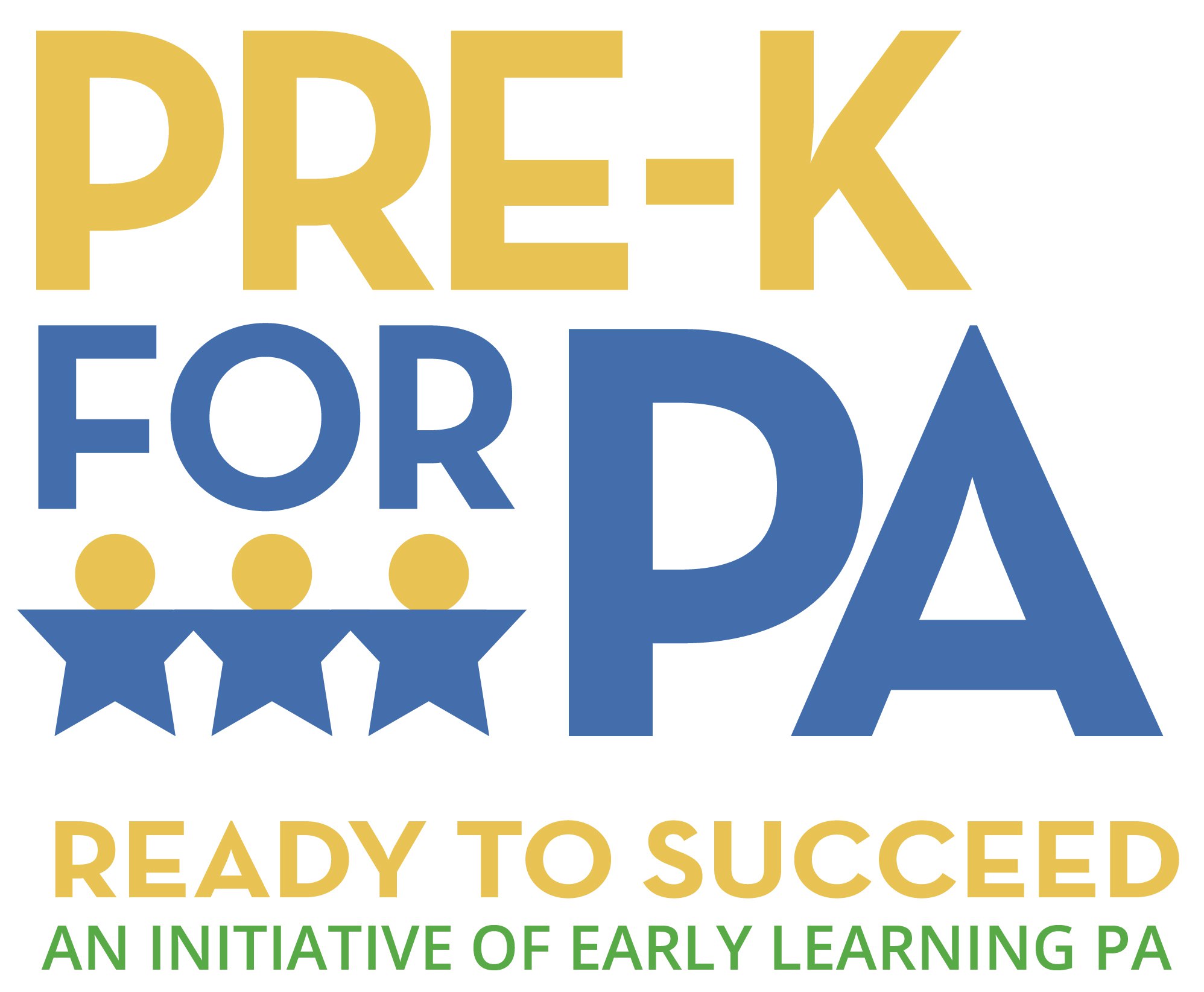
Pittsburgh Post-Gazette: Op-ed: The Academic Medal Count
High-quality pre-k should be available to all children in Pennsylvania
September 9, 2016
As the Rio Olympics fades into memory, let’s take a last look back and consider how America’s elite athletes once again won the medal count, extending our country’s all-time lead to more than 2,500 Olympic medals.
This victory was not solely theirs; Olympic athletes take the field backed by parents, coaches and our entire nation cheering them on. Years of training pay off when they climb the podium to claim their medals.
But increasingly, we athletes worry that the United States is winning the Olympic medal count but losing the academic medal count. In Rio, America’s 121 medals vastly outpaced second-place China. However, our children’s 2012 international academic scores ranked 35th in math and 27th in science.
Imagine all the squandered talent behind those academic markers. In athletic terms, it’s as if Kyle Snyder had never taken to the mat, or Simone Biles had never chalked her hands for the balance beam.
Champions for America’s Future, a nationwide network of top athletes and coaches helping kids succeed in life, believes it’s time for America to take the academic podium. Elite athletes start training young. Quality early-childhood education gives our children the same edge, making sure they reach the starting line known as kindergarten with the pre-math, pre-reading and social/emotional skills needed to reach their full potential.
We’ve all heard about the “achievement gap” of lower-income high school students whose academic scores trail their higher-income peers. It’s not as if those students were on par and then ran out of gas, like a leading runner suddenly faltering near the finish line. At least 60 percent of the achievement gap in reading and math is already present at kindergarten. Often, disadvantaged children start kindergarten knowing only one-fourth the words known by the children of professional parents.
For these kids, the race may be over before it starts. As champion Olympics and NCAA basketball coach Mike Krzyzewski puts it, “These children might be scrambling to catch up for the rest of their education – and possibly for the rest of their lives.”
It doesn’t have to be that way. We’ve seen high-quality pre-kindergarten turn disadvantaged children into champions:
• By the fourth and fifth grades, disadvantaged New Jersey children served by a preschool program were three-fourths of a year ahead in math and two-thirds of a year ahead in literacy. They were also much less likely to be held back in school.
• In North Carolina, the More at Four program improved third-grade reading and math scores by the equivalent of several months of extra instruction. It also led to 10 percent fewer special-education placements.
• By age 20, students from Chicago Child-Parent Centers preschool improved their graduation rates by 29 percent. Sadly, children not served by the program were 70 percent more likely to be arrested for a violent crime by age 18.
Unfortunately, here in Pennsylvania access to quality pre-kindergarten is limited. Among the 170,000 Pennsylvania 3- and 4-year-olds living in lower-income households, and therefore at greatest risk of academic failure, nearly 70 percent lack access to quality publicly funded early-childhood programs each year. This represents missed opportunities for 120,000 young children annually.
The years of training that result in an Olympic victory come with a cost, and so does greater access to high quality pre-kindergarten. When it comes to quality early learning, however, the investment actually saves money. A respected cost-benefit analysis of more than 20 different studies showed net benefits to society of $30,000 saved for each child served in pre-kindergarten.
Athletes know that every medal we earn represents a team effort, even when we enter the mat, pool, court or track all alone. Our youngest children deserve the same team effort guiding them toward success on and off the field.
For our children to be successful, our government leaders must write a game plan that expands quality pre-K to these 120,000 young children to help them achieve their potential. Then we can lead our commonwealth and nation to the top of the world’s academic podium.
Bruce Baumgartner, a four-time Olympic wrestling medalist, is director of athletics at Edinboro University and president of USA Wrestling.
Read the full op-ed here.

Centre Daily Times: Op-ed: Helping students find success starts at a young age
By Charlene Friedman
September 2, 2016
As we celebrate Labor Day weekend and honor the workforce this year, many hardworking Americans are giving thanks for having jobs in today’s sometimes-volatile economy. Indeed, too many are still struggling to find positions in a world where workforce needs have been shifting and where 52 percent of employers have difficulty hiring people with the skills, training or education they’re looking for.
In fact, according to a new report from ReadyNation, more than 170,000 positions in Pennsylvania will not be filled with in-state employees possessing the educational credentials their employers seek. Businesses spend about $188.9 million each year on retraining employees, and about 56 percent of employers expect the recruiting problem to worsen.
Sadly, these figures make sense since 28 percent of students entering the State System of Higher Education have to enroll in remedial courses, costing about $153 million every year. Looking back further, research shows that two-thirds of eighth-graders are not proficient in math and science — two disciplines in which proficiency has become more critical for thriving in today’s STEM-driven economy.
STEM (science, technology, engineering and math) occupations in sectors like health care and computer science have been growing by as much as 20 to 37 percent nationwide. Moreover, STEM jobs are typically higher paying than those in other fields, often commanding salaries more than double the median salary for all workers even though many of these positions do not require four-year college degrees.
So how do we prepare more children to succeed in these fields? Research data shows that children’s knowledge of mathematics at preschool age (3 and 4 years old) predicts their later success into elementary, middle and even high school.
Ninety percent of the human brain is developed before age 5, and the first three to five years of life are a unique period of growth for a child’s brain. Young children can learn more STEM content than many realize. A quality early learning curriculum that capitalizes on the natural curiosity and exploration of young children quickly develops into an understanding of math and science concepts.
Children can (and should) experience this content through enjoyable, play-based activities appropriate for their age. Programs like Pre-K Counts, Head Start, and Keystone STARS-3 and -4 are based on the Pennsylvania learning standards for early childhood prekindergarten and include topics and content that help lay this foundation for STEM abilities.
Pennsylvania has a long tradition of investing in high-quality early childhood education, but it’s not enough. While Pennsylvania’s recently enacted state budget for 2016-17 will allow 6,200 additional children to enroll for a full year, about 70 percent of the state’s income-eligible 3- and 4-year olds do not have access because of inadequate funding. That’s 120,000 young children each year who might lack learning experiences in math and science fundamentals.
Workers and business owners all benefit when our economy is operating on all cylinders. Leaving so many young children without access to high-quality publicly funded pre-K jeopardizes their individual futures and our collective prosperity. It is my hope that by next Labor Day our state policymakers will have acted boldly to serve more of these 120,000 young children.
Charlene Friedman is the broker of record for Industrial-Commercial Realty LLC, State College Downtown Properties and serves on ReadyNation and Pennsylvania’s Early Learning Investment Commission.
Read more here: http://www.centredaily.com/opinion/article99638062.html#storylink=cpy

The Sentinel: Book: Early STEM funding key to state’s workforce
August 26, 2016
As we approach Labor Day, it is right to acknowledge the vital role that a skilled workforce plays in economic prosperity. However, the exact nature of those skills are changing.
Increasingly, STEM (science, technology, engineering, and math) skills demand attention because they are driving the economy. These jobs are high-paying, and they’re expected to grow by 20 percent to 37 percent in coming years. However, despite their desirability, STEM capabilities are lacking in the workforce. More than half of Pennsylvania employers report trouble finding people with adequate skills, training, or education, especially in technical and skilled job openings.
Now, researchers have opened a new window into our understanding of how those rudimentary math skills impact a lifetime of learning. The roots of STEM skills, we’re learning, are planted in early childhood. The capabilities in science, technology, engineering, and math that employers demand actually start forming when that small child is counting to 10.
Many admirable efforts to build STEM skills among students concentrate on middle and high school, but it’s time to turn our attention to the youngest learners. STEM skills truly do take root in the preschool years, as these findings show:
When disadvantaged children enter kindergarten, they can be 18 months behind their peers in math achievement. Early childhood education can help to close the gap, because those first three to five years of life are the time when children’s brains build synapses, the neural connections that support learning and skill development, at the rate of 700 per second.
Children are naturally curious, and strong early learning curricula capitalize on that. High-quality early childhood education directs children to play-based activities purposefully designed to build understanding of real math and science concepts.
Early math skills can predict later school success, even in reading. But if math problems persist at ages 6, 8, and 10, children are less likely to graduate from high school or attend college.
Proper brain development in young children also lays the groundwork for desirable workplace traits, including focus, perseverance, and teamwork.
Pennsylvania has a long tradition of investing in high-quality early childhood education, but it’s not enough. While Pennsylvania’s recently enacted state budget for 2016-17 will allow 6,200 additional children to enroll for a full year, about 70 percent of PA’s income-eligible three- and four-year olds do not have access because of inadequate funding. That’s 120,000 young children each year who might lack learning experiences in math and science fundamentals.
In order for our future workers to continue making significant achievements to our economic prosperity, we must invest in them as children by increasing access to quality early childhood education programs. It is my hope that, by next Labor Day, we will be celebrating a continued robust investment in these programs, pointing more children toward futures as participating citizens in the vitality of our local communities.
Read the full op-ed here.

PennLive.com: Editorial: Legislature, Wolf should act responsibly on funding for pre-k programs
By: John Micek June 15, 2016
Of all the investments that Pennsylvania makes on behalf of its citizens, few are more important – or have farther-reaching consequences – than the money it directs toward public education.
In fact, such an investment is mandated by the Pennsylvania Constitution.
It’s right there in Article III, Section 14, which holds that “the General Assembly shall provide for the maintenance and support of a thorough and efficient system of public education to serve the needs of the Commonwealth.”
And as important as the billions of dollars the state spends annually on kindergarten through 12th grade education and higher education are, the money it spends on its youngest Pennsylvania, those aged three and four years old, are critical for future success.
In its most recent budget request, the Wolf administration, has asked for a $90 million increase for preschool programs, from the current $166.5 million to $256.3 million in the fiscal year that starts on July 1.
That tally includes $60 million in new spending for 2016-17 and $30 million that the administration did not receive in the 2015-16 state budget.
If approved in full, the money would allow 14,000 more children access to preschool, PennLive’s Jan Murphy reported in February.
While that is a towering figure, it is, for a number of reasons, an investment worth making.
And it is a goal that Gov. Tom Wolf and Republican legislative leaders should work diligently to meet in the two weeks that remain before the June 30 deadline to pass a new spending plan.
For those reflecting on their own preschool years, perhaps recalling languid days filled with story time, coloring and naps, those days are largely history now.
Children in state-subsidized programs have an entirely different experience.
“We’re not talking about childcare,” Joan Benso, the president of the Pennsylvania Partnerships for Children, told the PennLive/Patriot-News editorial board recently. “We’re talking about a school year/school day program. It requires state-certified teachers. It is an academically enriched program.”
This year, a 15,000-member coalition, Pre-K for Pennsylvania, which includes educators, advocates, members of the business community and retired military officials, are lending their voices to the call for increased funding.
They hope to increase taxpayer spending on preschool programs to nearly $500 million by fiscal 2019.
According to a January 2016 study by the Pennsylvania Partnerships for Children and the Pre-K for Pa campaign, only one in six of the state’s 3- and 4-year-olds – nearly 300,000 – were enrolled in high-quality preschool programs and 70 percent of about 175,000 preschoolers at risk of school failure lacked access to these programs.
According to data compiled by the National Institute for Early Education Research, Pennsylvania now ranks 15th in the nation in access to pre-school for 3-year-olds. Five years’ previous, the state was ranked 11th.
The state is 30th in the nation in access to preschool for 4-year-olds, down from 24th place in the same time period.
With those rankings and the benefits of such programs in mind, the arguments for more money are compelling.
An early investment in a child’s education now means reducing the chances that he or she will drop out of school, get into trouble, and land in jail later in life.
“Early learning programs are a ‘fork in the road’ opportunity to reduce the number of future criminals by placing more at-risk children on a secure path to school and life success,” Cumberland County District Attorney David J. Freed said.
Pennsylvania Corrections Secretary John Wetzel has also said that spending on early childhood programs are one of the best ways to reduce Pennsylvania’s ever-growing prisons budget. The agency’s general fund appropriation is set to rise from $2.25 billion this year to $2.6 billion starting July 1.
Spending on preschool programs also saves money by preventing grade retention and reducing special education placements in later grades. Estimates show that every dollar invested in such programs yields $17 in savings.
Better prepared children also mean higher-achieving children, thus resulting in young adults better who can “help Pennsylvania build the workforce it needs to remain competitive in the global marketplace,” said former Lieutenant Gov. Jim Cawley, now the CEO of the Greater Philadelphia and Southern New Jersey Chamber of Commerce.
There’s little doubt that these programs cost money – worthwhile investments rarely come cheap.
Read the full editorial here.

Scranton Times: Editorial: Expand Pre-k for More Kids
By: Editorial Board 6/14/16
For politicians, early childhood education is a case of a narrow window and a far horizon. In Pennsylvania, state legislators are too focused on that horizon.
Abundant research on education and brain development shows that there is a relatively narrow window, between ages 3 and 5, in which to best establish a solid educational foundation in most kids — especially regarding language.
Yet in Pennsylvania, only one in six of Pennsylvania’s 300,000 3- and 4-year-olds are enrolled in pre-kindergarten programs.
According to the National Institute for Early Education Research, in 2015 Pennsylvania ranked 15th nationally in pre-K access for 3-year-olds, down from 11th in 2010, and 30th in access for 4-year-olds, down from 24th five years earlier.
Over the period, the state has fallen behind all of the other states in the region in making early education accessible. The institute said 26 percent of Pennsylvania 4-year-olds had access in 2015, compared with New York, 54 percent; New Jersey, 35 percent; Maryland, 42 percent, and West Virginia, 94 percent.
A big part of the problem is that far horizon. Politicians often are reluctant to dedicate state funds to early childhood education because the results are not instantaneous. Unlike a rebuilt highway or bridge, the results are not immediately marketable and, therefore, not politically marketable. Results of increasing pre-K access don’t show up until the kids’ academic performance is assessed much later in their school careers.
Those lawmakers should depend on existing research, though, showing that kids who have the benefit of high-quality pre-K programs are less likely to drop out of school and far more likely to graduate and attend college. They also have been shown to have fewer behavioral problems later in their school years, further improving their chances of success.
According to the early-education advocacy group Pre-K for PA, 176,000 of the 300,000 3- and 4-year-olds statewide live in families with incomes below 300 percent of the poverty line — gross income of $72,750 for a family of four. Of those children, 121,000 do not have access to publicly funded, high-quality pre-K programs. Of 4,775 children of that age group in Lackawanna County, 75 percent live in families earning less than 300 percent of the poverty line, and 1,775 don’t have access to pre-K programs. Elsewhere in the region: Luzerne County, 3,517; Wayne County, 163; Susquehanna County, 223; and Wyoming County, 341.
Read the full editorial here.

Scranton Times: Advocates Urge More Money for Pre-k
BY BORYS KRAWCZENIUK / PUBLISHED: JUNE 9, 2016
The last 15 years produced far more quality pre-kindergarten schools in Lackawanna County, but the families of hundreds of children who need them most still can’t afford them, advocates for more state pre-schools said Wednesday.
In a meeting with the The Times-Tribune editorial board, the advocates proposed a $90 million increase in funding for the state’s Pre-K Counts program for the fiscal year that starts July 1.
Begun under Gov. Ed Rendell in 2007, the state’s Pre-K Counts program funds schools that teach 3- and 4-year-olds. Unlike Oklahoma, which almost entirely funds pre-kindergarten education, Pennsylvania only pays for about 30 percent of 3- and 4-year-olds to attend pre-schools, said Bruce Clash, state director of Fight Crime: Invest in Kids. Fight Crime represents about 175 police chiefs, county sheriffs and district attorneys across the state who believe more early-childhood education will reduce crime and cost society less in the long run.
Pre-K funding remains the subject of budget negotiations in Harrisburg between the Republican-controlled state General Assembly and Democratic Gov. Tom Wolf.
Mr. Clash portrayed the need for universal pre-kindergarten partly as a national security matter. Almost three-quarters of children between 18 and 24 years old can’t join the military because they either don’t have a high school diploma, have a criminal record or can’t meet the physical fitness requirements, he said.
“But we know that pre-K (education) addresses all three of these issues … in terms of preventing crime, increasing high school graduation rates and getting kids and families off to a healthier start that leads to a lifetime of healthier outcomes,” Mr. Clash said, referring to studies that show the effectiveness of pre-K.
Lackawanna County has at least 14 state-certified pre-schools compared to two 15 years ago, but too many pre-school-aged children’s families still can’t afford one, said Gary Drapek, president and chief executive officer of the United Way of Lackawanna and Wayne Counties.
Eligibility for Pre-K Counts is for up to three times the federal poverty level, or $72,750 for a family of four.
In Lackawanna County, an estimated 1,775 children, ages 3 and 4, are eligible, but there isn’t enough money to help their families pay to send them to pre-school. Statewide, that number is more than 120,000.
Read the full editorial here.





